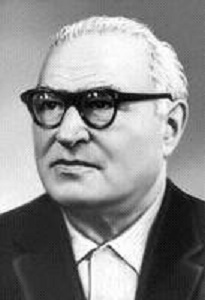

February 21, 1906 was born an outstanding Soviet illustrator, graphic artist, teacher Eugene Adolfovich Kibrik. Hertz Kibrik, namely, this name he received at birth, was born into a well-to-do Jewish family in Voznesensk. His father was a large grain seller and shipowner. Since childhood, Eugene Kibrik was fond of drawing and reading, visited a circle of fine arts, and in 1922 he entered the Art Institute in Odessa.
In 1925, Kibrik moved to Leningrad and entered VHUTEIN. In training at this time, a streaming method of teaching was adopted, which was connected with the distrust of the authorities to the old professor. Teachers changed every other day, bringing confusion to the heads of students. Two years later, Kibrik moved to the studio of Pavel Filonov – one of the leaders of the Russian avant-garde. Under the great influence of the master in 1930, Kibrik made illustrations to “Lieutenant Kizhe” Yuri Tynyanov. In the 1930s, the artist fully devotes himself to illustrations – “Nevskaya novia” by DM Lavrukhin, 1933; “Heavy Division” A. G. Lebedenko, 1934, etc. Kibrik is already developing his own energetic and rigid manner of drawing, grasping the visible features of the surrounding world. But the determining factor was his work on R. Rolland’s book “Cola Bryunion” (1934-36). Kibrik attracts full-blooded, epically intact characters, he gives his characters an open, theatrical gesture, active facial expressions, often using professional actors as role models. He loves a large format, giving scope to the natural freedom of movement.
The rough, coarse-grained stroke of his lithographs densely and juicyly falls on the page of the book. So builds Kibrik and his next book – “The Legend of Ulenspiegel …” by S. de Coster (1937-38). The Great Patriotic War reinforced the artist’s desire for heroic themes and attracted his attention to the Russian classics: N. Gogol’s Taras Bulba (1944-45).
Monumental drama and heroics of their best books of 1930-40’s. the artist remained faithful in later works: “How the Steel Was Tempered” by NA Ostrovsky (1953-56), “Boris Godunov” by Alexander Pushkin (1959-64), “Portrait” by NV Gogol (1973- 77).
Yevgeni Kibrik started his pedagogical activity in 1953, becoming the head of the easel graphics studio of the MGAHI named after M.Sh. VI Surikov. His unique method of teaching, the desire to find an individual approach to each student, to reveal new facets of talent in everyone inspired respect and respect not only for students but also for colleagues. In 1962, Kibrik became the head of the department of graphics. For 25 years from 1953 to 1978 the artist was a professor at the Moscow State Academy of Architecture. Surikov. Yevgeny Kibrik died on July 18, 1978, was buried in Moscow at the Novodevichy Cemetery.